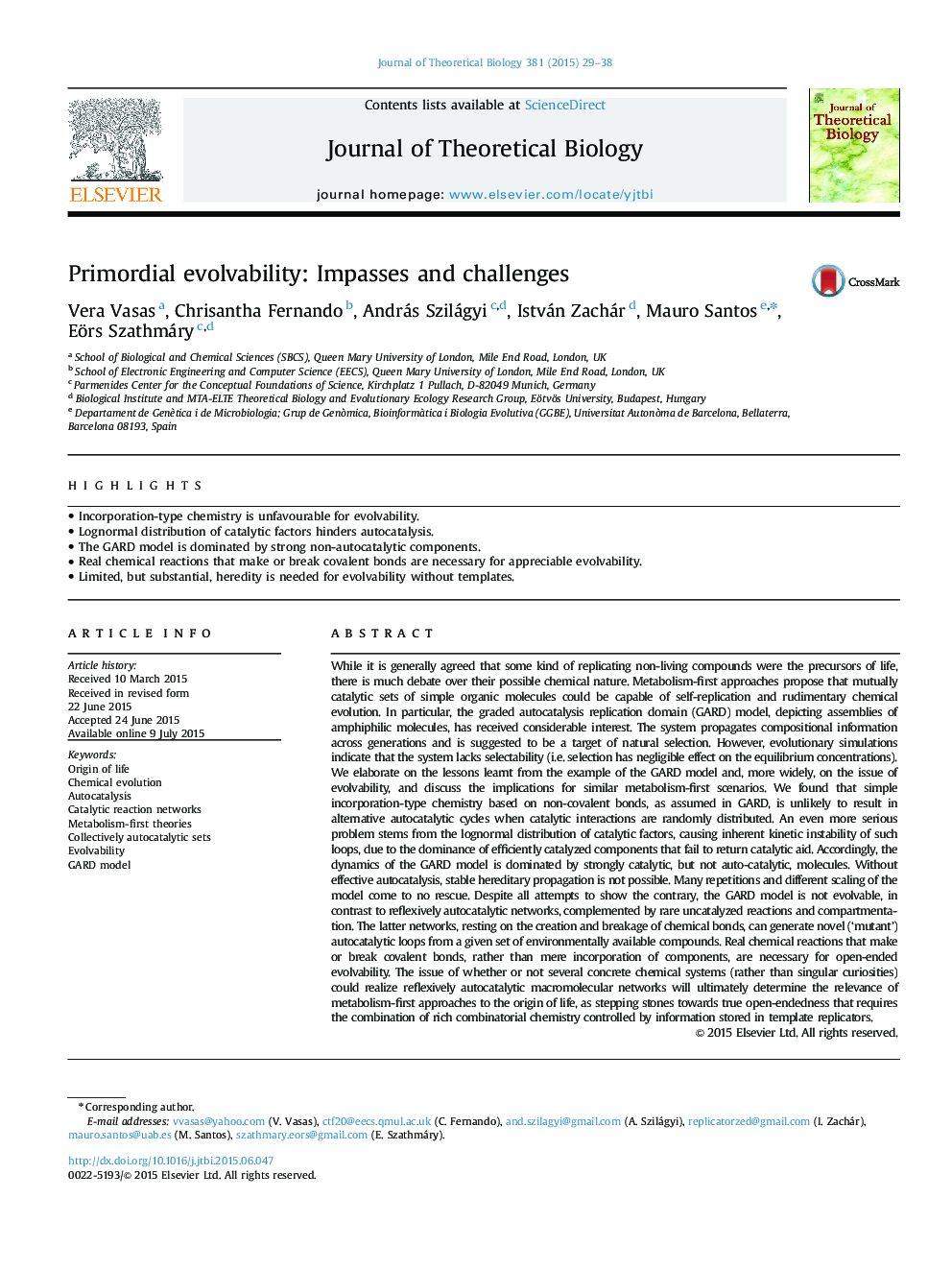| کد مقاله | کد نشریه | سال انتشار | مقاله انگلیسی | نسخه تمام متن |
|---|---|---|---|---|
| 4496012 | 1623829 | 2015 | 10 صفحه PDF | دانلود رایگان |
• Incorporation-type chemistry is unfavourable for evolvability.
• Lognormal distribution of catalytic factors hinders autocatalysis.
• The GARD model is dominated by strong non-autocatalytic components.
• Real chemical reactions that make or break covalent bonds are necessary for appreciable evolvability.
• Limited, but substantial, heredity is needed for evolvability without templates.
While it is generally agreed that some kind of replicating non-living compounds were the precursors of life, there is much debate over their possible chemical nature. Metabolism-first approaches propose that mutually catalytic sets of simple organic molecules could be capable of self-replication and rudimentary chemical evolution. In particular, the graded autocatalysis replication domain (GARD) model, depicting assemblies of amphiphilic molecules, has received considerable interest. The system propagates compositional information across generations and is suggested to be a target of natural selection. However, evolutionary simulations indicate that the system lacks selectability (i.e. selection has negligible effect on the equilibrium concentrations). We elaborate on the lessons learnt from the example of the GARD model and, more widely, on the issue of evolvability, and discuss the implications for similar metabolism-first scenarios. We found that simple incorporation-type chemistry based on non-covalent bonds, as assumed in GARD, is unlikely to result in alternative autocatalytic cycles when catalytic interactions are randomly distributed. An even more serious problem stems from the lognormal distribution of catalytic factors, causing inherent kinetic instability of such loops, due to the dominance of efficiently catalyzed components that fail to return catalytic aid. Accordingly, the dynamics of the GARD model is dominated by strongly catalytic, but not auto-catalytic, molecules. Without effective autocatalysis, stable hereditary propagation is not possible. Many repetitions and different scaling of the model come to no rescue. Despite all attempts to show the contrary, the GARD model is not evolvable, in contrast to reflexively autocatalytic networks, complemented by rare uncatalyzed reactions and compartmentation. The latter networks, resting on the creation and breakage of chemical bonds, can generate novel (‘mutant’) autocatalytic loops from a given set of environmentally available compounds. Real chemical reactions that make or break covalent bonds, rather than mere incorporation of components, are necessary for open-ended evolvability. The issue of whether or not several concrete chemical systems (rather than singular curiosities) could realize reflexively autocatalytic macromolecular networks will ultimately determine the relevance of metabolism-first approaches to the origin of life, as stepping stones towards true open-endedness that requires the combination of rich combinatorial chemistry controlled by information stored in template replicators.
Journal: Journal of Theoretical Biology - Volume 381, 21 September 2015, Pages 29–38
